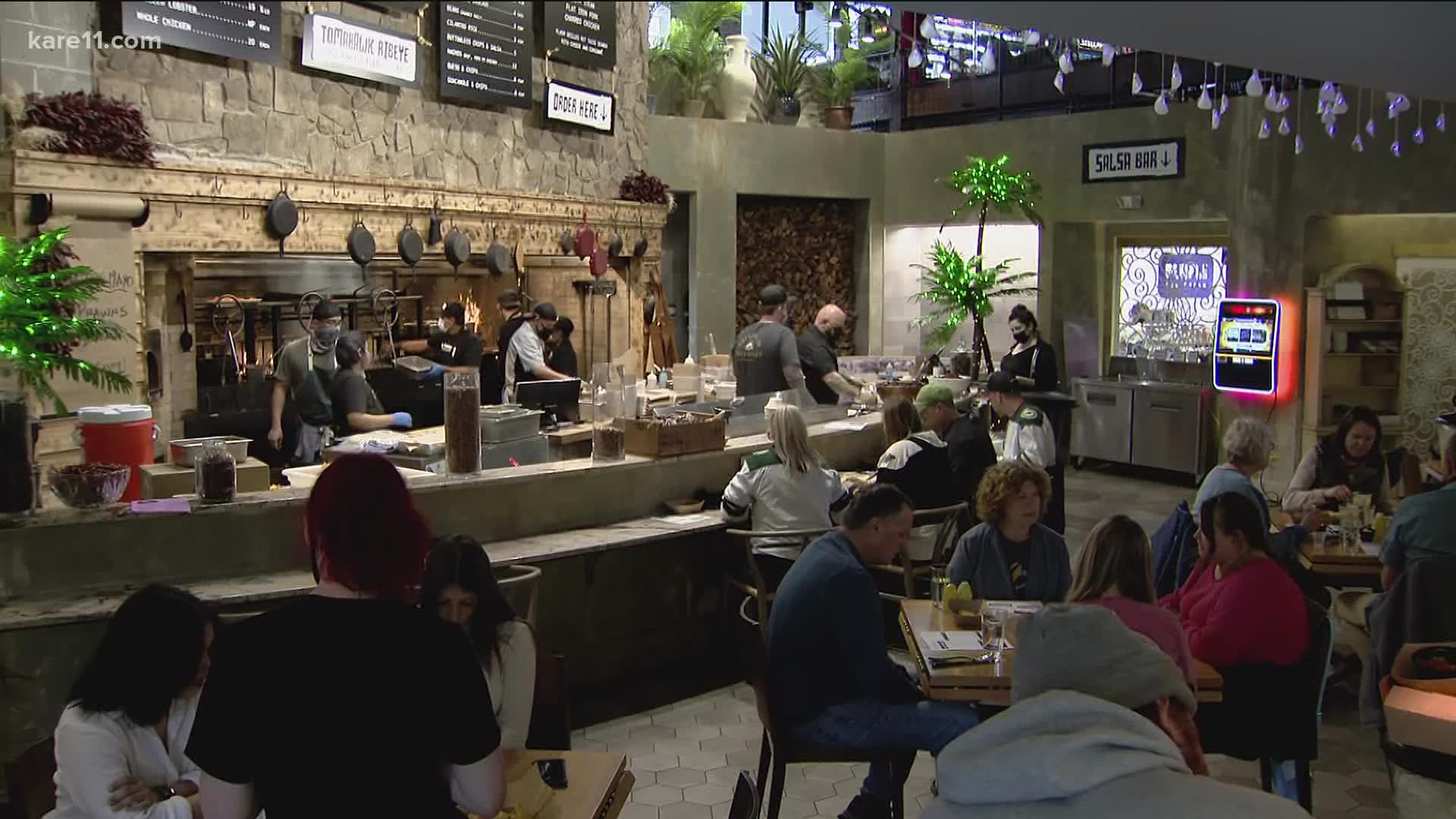MINNEAPOLIS — The summer of 2021 hasn't officially ended quite yet, but we already know it provided a much-needed boost to many hospitality businesses in Minnesota.
According a newly released "Summer 2021 Tourism and Hospitality Industry Survey," 71% of hospitality firms across all sectors reported that business in summer 2021 is up compared to 2020. That might not be a huge shock considering where we were last summer, but 45% of firms say revenue is even up compared to summer 2019.
The survey was conducted by the Minneapolis Federal Reserve in conjunction with Explore Minnesota and Hospitality Minnesota.
"It's definitely a mixed bag," said Ben Woglsand, with Hospitality Minnesota. "Some sectors, like lodging and campgrounds saw a big improvement. Roughly 96% of them indicate that their financial health is positive and growing, and 82% say solvency is no longer a concern, so that's very encouraging in that sector."
But in other areas of hospitality like restaurants or hotels, success varied widely, sometimes by geography.
"You're seeing, I would say, significantly worse outcomes in the metro," said Ron Wirtz, with the Minneapolis Federal Reserve. "That's because a lot of the hospitality firms in the metro are catering to really, really large events that maybe haven't come back as much."
Wirtz says that includes big concerts, conventions, sporting events and even business travel, all of which have yet to really bounce back.
Even though 34% of businesses statewide did report already meeting or surpassing pre-pandemic levels, the vast majority expect a long road ahead.
"It's not just the future, but trying to dig out from the hole of the past," Wogsland said. "Many of these businesses lost the equivalent of 249 days of revenue."
The survey found, roughly two-thirds of all hospitality firms took on significant debt during the pandemic. An average food service business took on $500,000 in debt, while an average hotel took on $1.1 million in debt.
The vast majority say they're also trying to overcome a tight labor market.
"We're hearing, and have been hearing for some time, all across the state, that certain operations are having to limit their hours," Wogsland said. "They are having to turn away guests in overnight accommodation places in some cases, because they don't have the staff that they need in terms of numbers. Those are all challenges that hurt the bottom line."
But with nearly every single industry facing similar labor shortages, Wirtz says the end of enhanced unemployment benefits next week isn't likely to fix everything.
"Personally, I'll be a little surprised if there is a huge influx," he said. "What we've seen from other states that have ended (enhanced benefits) early, is there might be some improvement, but it's not that dramatic. It's not going to move the needle that much.
"I think those employers that are offering the higher wages, the flexibility, the things that workers are looking for, they'll see a little better improvement probably in their labor supply, than maybe others that don't have that."
Ben says there is concern across the hospitality industry about what the fall will bring, especially if the COVID cases continue to climb and weather forces more people inside.
It's a big reason why 56% of food service operators are still saying they're in jeopardy of financial collapse or bankruptcy in the next six to 12 months.

